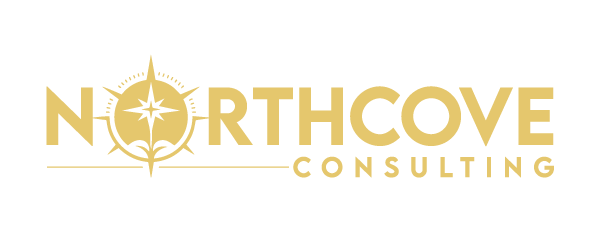
The Top 7 Benefits of Effective Workforce Planning Every HR Leader Should Know
Most conversations about workforce planning sound like they came out of a management textbook. Buzzwords. Charts. Vague strategies. But when you’re deep in the day-to-day reality of hiring, budgeting, and team development, you know it’s not about theory. It’s about people.
Effective workforce planning is a necessity. And it doesn’t matter if you’re running a small business with twenty employees or managing thousands at a national level. The need is the same: You’ve got to make sure the right people are in the right roles, at the right time, doing the right things.
This article breaks down the real, boots-on-the-ground benefits of workforce planning. Not the kind consultants toss around in slide decks, but the kind that actually impact your team, your goals, and your bottom line.
Clarity in the Middle of Chaos
You know that feeling when everything is moving too fast? Markets shift. Priorities change. You’ve got five job openings, but you’re not even sure if you need all of them.
That’s where effective workforce planning comes in. It helps you pause and actually see what’s going on. You look at your goals. You look at your people. And suddenly, you know what you’re missing, and what you don’t need. That clarity is gold.
Instead of just reacting to who leaves or what pops up, you’re building a workforce development plan around what’s ahead. You make smarter calls on hiring, development, and structure. You get out of firefighting mode.
It Keeps You from Bleeding Money
Labor is expensive. Every new hire, every turnover, every mismatch, it adds up fast. One wrong move can throw off your budget for the whole quarter.
A good workforce strategy helps you keep your costs in check. You’re not guessing how many people to hire or what skills you’ll need next quarter. Workforce strategy planning is very important in this. You can budget for it. You can defend it.
And if you’re using compensation benchmarking tools, now you’re making decisions with context. You know what your competitors are offering. You know if you’re overpaying or underpaying. That insight lets you be strategic, not reactive.
People Actually Fit Their Roles
Ever had someone in a role that didn’t fit? Maybe they were good on paper, but something didn’t click. Or maybe they got hired during a rush and just never got the training they needed.
Effective workforce planning helps prevent that. You’re looking ahead, matching actual business needs with actual people, not just filling seats. You’re identifying gaps early. You’re shifting responsibilities around before burnout hits. You’re giving people the best chance to succeed.
When people feel like they belong in their roles, they stick around. They grow. They care. It changes everything.
You Catch Skill Gaps Before They Sink You
Your business evolves. So should your team. But if you’re not paying attention, your employees might be holding onto skills that aren’t even relevant anymore.
With a proper workforce development plan, you can track what skills your team has, and what’s missing. Maybe AI is changing your industry. Maybe regulations are shifting. If you’re ahead of it, you can train instead of panic-hiring. You can reskill people who already know your culture instead of rolling the dice on strangers.
That’s not just smart. It’s respectful.
Better Decisions Backed by Real Numbers
We’ve all made gut decisions. Sometimes they work. Sometimes they blow up.
Strategic workforce planning gives you more than guesses. You’ve got data. You’ve got trends. You can look at past turnover rates, team performance metrics, hiring timelines, all of it.
When you sit in front of your executive team, you’re not just hoping they believe you. You’re showing them the numbers. That’s powerful.
Employees Feel Like They Matter
People don’t leave jobs because they want a change of scenery. They leave because they feel ignored, misunderstood, or stuck.
When your effective workforce planning is intentional, everyone knows what’s expected. They know where they’re heading. They know what their growth path looks like. That’s the kind of clarity that keeps people engaged.
This also ties in closely with areas like Strategic Rewards Planning. When rewards reflect actual contributions and strategic workforce development goals, trust builds.
You Can Grow Without Falling Apart
Rapid growth sounds exciting until you’re drowning in turnover, training gaps, and missed deadlines. What once felt like momentum suddenly turns into a daily scramble. New hires arrive faster than you can onboard them. Managers are stretched thin, trying to lead teams that doubled in size overnight.
And systems that worked when you were smaller start to buckle under the pressure. Without a clear workforce plan in place, growth becomes reactive instead of strategic, and that’s when burnout, confusion, and costly mistakes creep in. Growth should feel like progress, not panic. And that’s exactly what thoughtful, effective workforce planning helps prevent.
With smart workforce strategy planning, growth doesn’t have to be chaos. You already know what teams need to expand. You’ve got roles outlined. You’ve looked at how your Sales Compensation Strategy and Design should evolve. You’ve got a plan.
It’s not about predicting the future perfectly. It’s about being ready when it gets here.
Quick Table for the Visual Thinkers
What You Gain | What It Means in Real Life |
Clarity | Know exactly who you need and when |
Budget Control | Plan and manage labor costs with confidence |
Skill Gap Awareness | Put the right people in the right roles |
Smarter Decisions | Use data instead of guesses |
Employee Engagement | Show people where they fit and how they matter |
Why It’s Even More Important Now
The world of work has changed. People want purpose. Leaders need flexibility. And companies can’t afford to wing it anymore.
Effective workforce planning helps you stay grounded. It gives you a way to meet today’s needs while still prepping for tomorrow. You don’t have to wait until you’re short-staffed or over budget. You can lead with intention.
And if you need backup, Northcove Consulting has been a solid name in helping companies navigate these exact challenges. They don’t show up with generic templates or one-size-fits-all advice. Instead, they listen. They dig into what’s really going on inside your organization. The messy, human parts and work alongside your team to build a workforce strategy that actually fits.
Whether you’re scaling fast, struggling with turnover, or just not sure where to start, having a partner who’s been in the trenches makes all the difference. Sometimes, the smartest move isn’t going it alone, it’s knowing when to call in steady, experienced help.
Final Thoughts
This isn’t about having a perfect plan. It’s about having a plan—one that grows with you, one that listens to your people, one that adapts when life throws curveballs.
The importance of workforce planning isn’t theoretical. It’s real. It’s messy. It’s honest. And when done right, it brings stability, clarity, and progress.
Let’s stop pretending it’s just an HR thing. Effective workforce planning is a business survival skill, and more importantly, it’s a way to take care of your people while still moving forward.
If you’re serious about building a better future for your team and your business, now’s the time to start with executive compensation.
Ready to build a smarter, more resilient workforce? Discover how strategic workforce planning can transform your HR efforts and drive real business results. Connect with our experts at [email protected] or call (877) 595-3087 today. Let’s future-proof your talent strategy together.
A Few Quick Questions You Might Be Wondering
Is this only for big corporations?
Not at all. Even small teams benefit when roles are clear and goals are mapped out.
How often should I update the plan?
At least once a year, but check in every few months to stay current.
What if I don’t have data?
Start with what you know: team performance, turnover, and current job descriptions. Build from there.
Can I use effective workforce planning to support DEI goals?
Absolutely. It helps uncover gaps and build hiring strategies that support equity.
What’s one common mistake to avoid?
Trying to do it all at once. Start small, focus on one team or department, and grow from there.
Related Posts
The Top 7 Benefits of Effective Workforce Planning Every HR Leader Should Know
The Top 7 Benefits of Effective Workforce Planning Every HR Leader Should Know Most conversations…
Identifying and Closing Skill Gaps in the Workplace with Workforce Data
Identifying and Closing Skill Gaps in the Workplace with Workforce Data Every thriving workplace has…
Internal Compensation Audit: Step-by-Step Guide with Audit Checklist for Internal Audit
Internal Compensation Audit: Step-by-Step Guide with Audit Checklist for Internal Audit An effective HR management…
How to Conduct a Pay Equity Audit and Why It Matters
How to Conduct a Pay Equity Audit and Why It Matters A pay equity audit…






